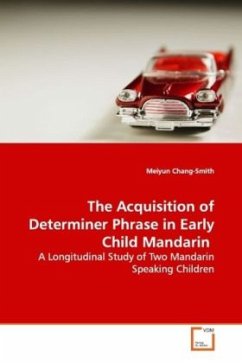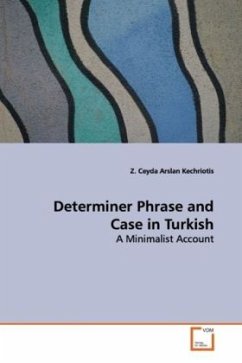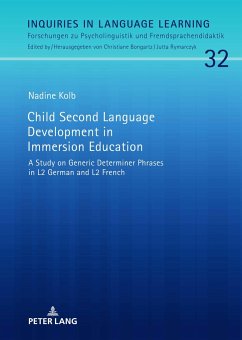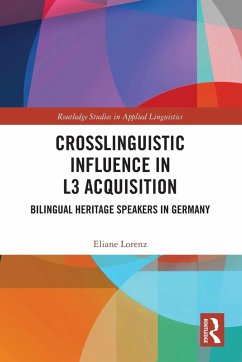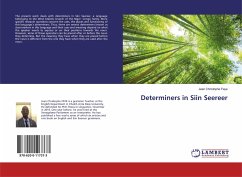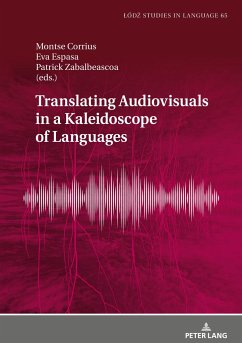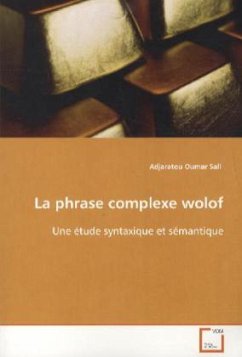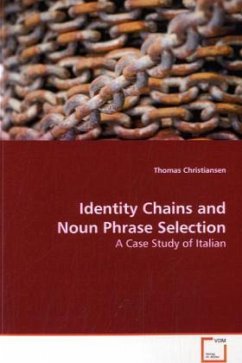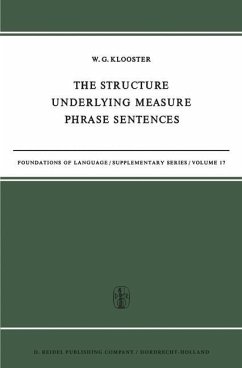
L3 acquisition of the German Determiner Phrase
The role of L1 Japanese and L2 English
Versandkostenfrei!
Versandfertig in 6-10 Tagen
52,99 €
inkl. MwSt.

PAYBACK Punkte
26 °P sammeln!
The second language (L2) acquisition of determinerphrase (DP) properties not present in a learner sfirst language (L1) has been shown to be problematic,with learners exhibiting variability in thesuppliance of forms. This book extends theinvestigation from L2 acquisition into the field ofthird language (L3) acquisition, by examiningJapanese L1 speakers with L2 English, acquiring L3German, using a variety of written and oral tasks.The features or properties under investigation aregrammatical gender and number agreement (on nouns,articles and attributive adjectives), definiteness onarticles, and ...
The second language (L2) acquisition of determiner
phrase (DP) properties not present in a learner s
first language (L1) has been shown to be problematic,
with learners exhibiting variability in the
suppliance of forms. This book extends the
investigation from L2 acquisition into the field of
third language (L3) acquisition, by examining
Japanese L1 speakers with L2 English, acquiring L3
German, using a variety of written and oral tasks.
The features or properties under investigation are
grammatical gender and number agreement (on nouns,
articles and attributive adjectives), definiteness on
articles, and the suppliance or omission of articles.
The data obtained are considered in relation to the
role of the L2 proficiency, and also in relation to
current hypotheses, such as Full Transfer/Partial
Access (Hawkins & Chan, 1997) and Full Transfer/Full
Access (Schwartz & Sprouse, 1994, 1996), linking to
the Missing Surface Inflection Hypothesis (Prévost &
White, 2000); the Prosodic Transfer Hypothesis (Goad& White, 2004); and the proposal of Distributed
Morphology (Harley & Noyer, 1999). This book will
find appeal with generative linguists interested in
both L2 and L3 acquisition.
phrase (DP) properties not present in a learner s
first language (L1) has been shown to be problematic,
with learners exhibiting variability in the
suppliance of forms. This book extends the
investigation from L2 acquisition into the field of
third language (L3) acquisition, by examining
Japanese L1 speakers with L2 English, acquiring L3
German, using a variety of written and oral tasks.
The features or properties under investigation are
grammatical gender and number agreement (on nouns,
articles and attributive adjectives), definiteness on
articles, and the suppliance or omission of articles.
The data obtained are considered in relation to the
role of the L2 proficiency, and also in relation to
current hypotheses, such as Full Transfer/Partial
Access (Hawkins & Chan, 1997) and Full Transfer/Full
Access (Schwartz & Sprouse, 1994, 1996), linking to
the Missing Surface Inflection Hypothesis (Prévost &
White, 2000); the Prosodic Transfer Hypothesis (Goad& White, 2004); and the proposal of Distributed
Morphology (Harley & Noyer, 1999). This book will
find appeal with generative linguists interested in
both L2 and L3 acquisition.



